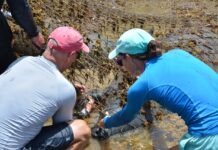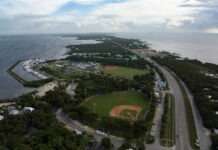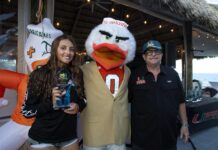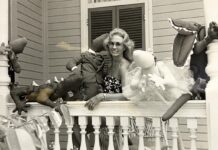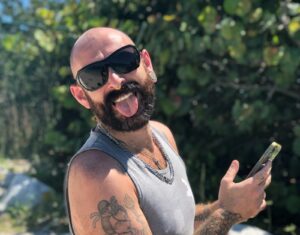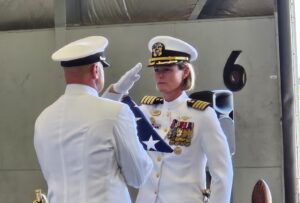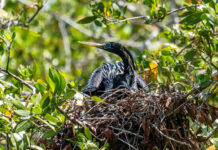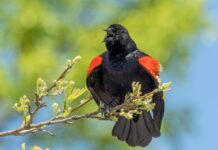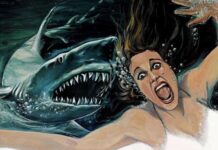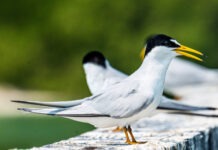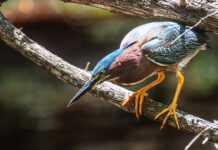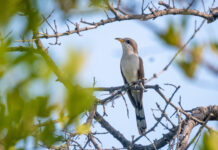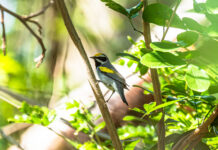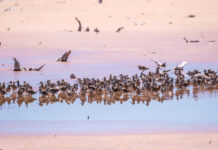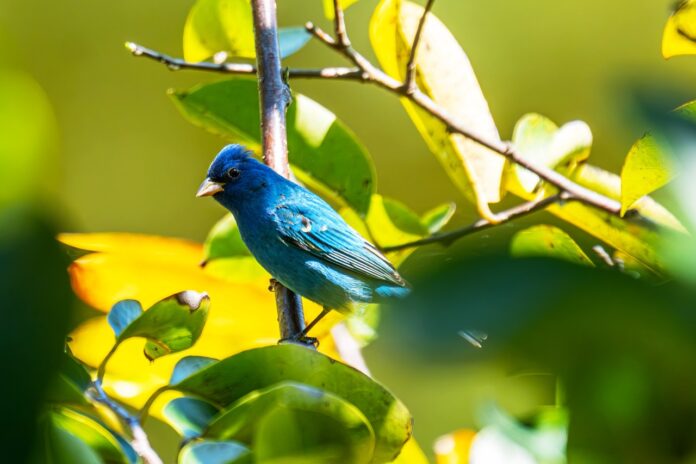
Indigo buntings don’t have a particularly distinctive shape. They’re round little things about the height and weight of a pack of cigarettes with a modest but sturdy triangular bill built largely for cracking seeds.
No one is sure where, exactly, the name bunting came from, though one theory says it derived from the Scandinavian word “buntin,” which means short and thick, or plump.
But it’s not the shape of an indigo bunting that anyone really notices. It’s the color, at least when it comes to the adult males. Technically it’s the indigo of its name, except on a color chart, indigo skews more purple than the bird. Indigo is also a dye, though, and if you look at pictures of the dried dye, the bird’s name makes more sense.
Indigo the color was given its name by Sir Isaac Newton, before he was a sir, but after his famous prism experiment that showed different colors were created by different wavelengths of light, and that there were seven colors in the rainbow of the visible color spectrum – colors every kindergartner can recite: red, orange, yellow, green, blue, indigo, violet.
Newton named the color indigo after the dye, even though the dye and the color in the visible color spectrum are not the same.
There are actually a lot of people who believe indigo shouldn’t be one of the colors named in the visible light spectrum. They point out that indigo has the narrowest bandwidth of any of the colors in the rainbow, with wavelengths between 425 and 445nm, or a zone of only 20 nanometers, where red lives between 625 and 740nm, with a zone of about 115 nanometers. Pro-indigo people make the counter argument that yellow only occupies a bandwidth of 25 nanometers, which is not much wider.
Another argument against indigo having a place in the rainbow is the fact that of the seven colors, three are primary (red, blue, yellow). Three are secondary colors (green, orange, violet), which are made from combinations of two primary colors. Indigo sticks out like a sore thumb as the only tertiary color, which is made of blue and violet, a primary and a secondary color.
Interestingly, in modern times, indigo has disappeared from icons such as the gay pride rainbow, the cover of Pink Floyd’s “Dark Side of the Moon,” and the My Little Pony lineup, but it seems to have retained its place in stickers of unicorns with rainbows in the background. Also: There’s the Indigo Girls.
So why did Newtown include indigo? Some believe it was because, despite being one of history’s great thinkers, he also had some occult beliefs (who doesn’t?) and considered seven a harmonic number, with seven notes in an octave, seven planets in the solar system (at the time), and seven days in a week.
According to one of my dictionaries of bird names (I own two; yes, I know I’m a geek), the bird was named after the dye, which is at least the right color.
Until 1882, when functional synthetic dyes were first created, if someone wanted a blue garment, it was almost always dyed with indigo, which was derived from plants that could not be grown in temperate Europe, but had to come from somewhere warm like Africa or East Asia. The name “indigo” is derived from the Greek for “from India.”
Making indigo dye was a complicated process. But, blue being a popular color, it was also insanely profitable.
Eliza Lucas, who was 16 in 1739 when her father left her to manage his three plantations in South Carolina, is often credited, along with her husband, Charles Pinckney, with bringing indigo production to the new world. Modern historians will usually point out that neither she nor her husband actually figured out how to cultivate indigo here, but rather the enslaved people working on her plantations who discovered a reliable method with knowledge they’d brought from Africa. Soon, indigo production was responsible for a third of the income brought in from exports in South Carolina.
One of the bleaker facts about indigo’s profitability is that slavery was not legal in neighboring Georgia during the early part of this era, but became so in 1751, once the potential profit from indigo — and the labor-intensive process to make it — was noted.
I can’t say I considered anything I’ve written so far when I saw an indigo bunting at the Botanical Garden last week. Some of that stuff I knew, some of it I researched. But I am generally too confounded with surprise or wonder any time I see an indigo bunting to think much about language and history, or even science.
The dumbfoundedness is not a result of rarity. This one bird was a precursor to the waves of indigo buntings – hundreds, but more likely thousands – that will come through the Keys in the coming weeks. They are skittish, at least when they are here, and usually give you just a one- or two-second look at best, but I’ve unexpectedly flushed 50 of them at a time from a single bush.
But they are just so blue, so (f-ing) blue that often I find myself almost paralyzed by the sight of them. It’s a regal blue that shifts into dark midnight, that shifts into deep cerulean, that shifts into Prussian blue, that shifts into a thousand other descriptives, none of them wholly satisfying.
And all of it glows just a bit, as if perhaps there is something electric behind it. That glow, I believe, comes from the fact that none of those blues are created by pigments.They are structural colors, created by minute particles in the feathers, all of them smaller in diameter than the wavelength of the color red, that scatter and reflect the blues in all different directions.
Because they tend to move fast through the open, I don’t have many good shots of indigo buntings. But this one I spied through a gap in the bushes, and managed to raise my camera fast enough to get a series of halfway decent shots. It felt something like catching lightning in a bottle.





